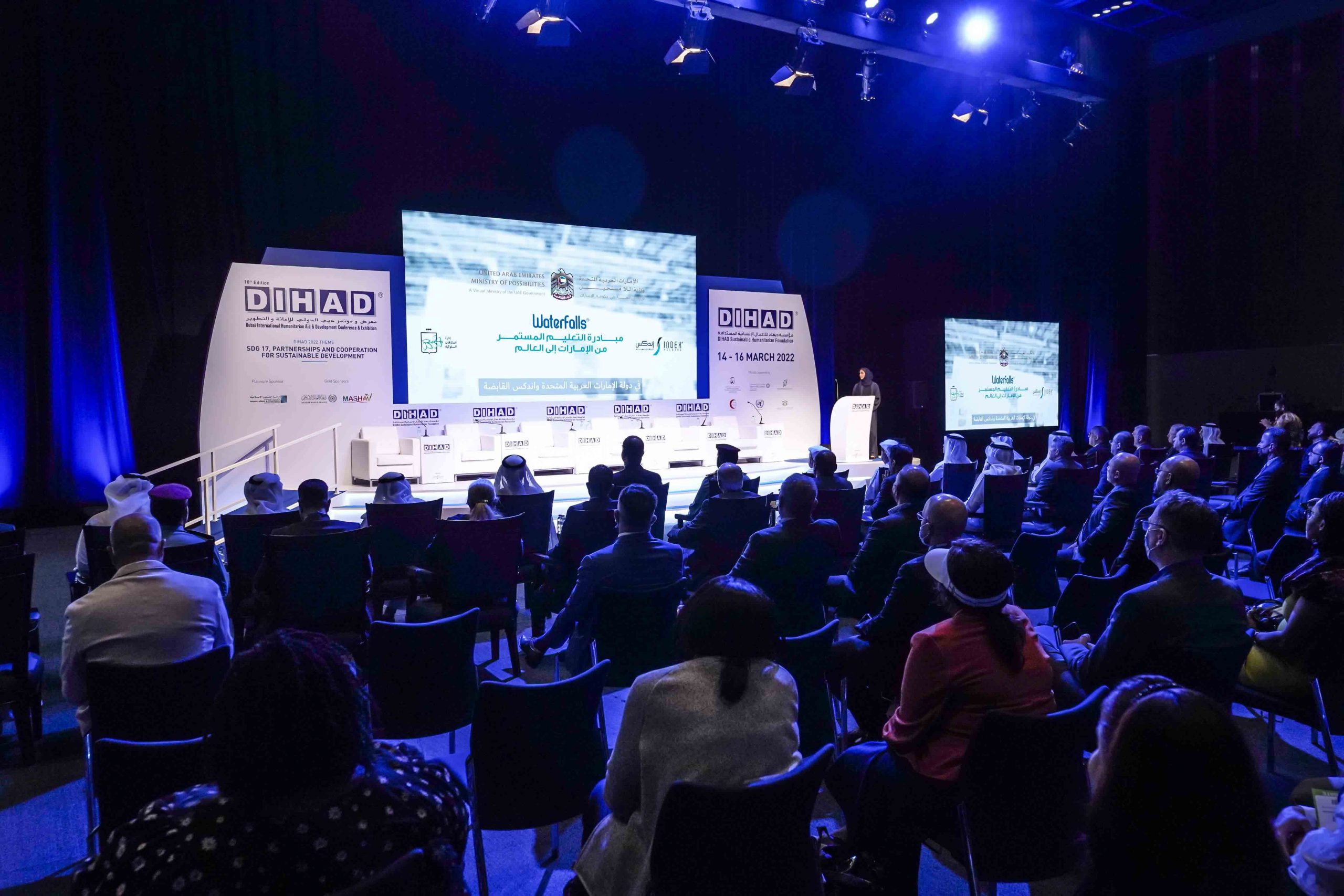DATE
March 25, 2022
CATEGORY
News & Press Releases
SHARE

Dubai, United Arab Emirates, 26 January, 2022 – Under the patronage of His Highness Sheikh Mohammed bin Rashid Al Maktoum, Vice President, Prime Minister of United Arab Emirates and Ruler of Dubai, the 18th annual Dubai International Humanitarian Aid and Development Conference and Exhibition – DIHAD 2022, is set to take place on 14-16 March 2022.
As the first ever humanitarian aid and development event in the Middle East, DIHAD 2022 will run for three days in the Sheikh Rashid Hall of the well-renowned Dubai World Trade Centre under the theme ‘SDG 17, Partnerships and Cooperation for Sustainable Development,’ in order to highlight the importance of strengthening partnerships and the need for global cooperation to tackle humanitarian issues.
In 2015, the UAE was among the first United Nation members, and first in the Arab world, to commit to the United Nations 2030 Agenda for Sustainable Development, which provides a shared blueprint for peace and prosperity for people and the planet, now and into the future. At its heart are the 17 Sustainable Development Goals (SDG 17), which are an urgent call for action by all countries – developed and developing – in a global partnership to end poverty, improve health and education, reduce inequality, and tackle climate change while working to preserve our oceans and forests. The UAE is ensuring to follow up thoroughly on its commitment to the 2030 Agenda at DIHAD 2022, as well as succeeding its own pledge of ‘Leaving No One Behind,’ against the backdrop of EXPO 2020 where 192 countries are participating on the largest global platform ever put together aimed at sharing cultures and uniting for a greater cause.
Commentating on the occasion, H.E. Ambassador Gerhard Putman-Cramer, CEO of DIHAD Sustainable Humanitarian Foundation, said, “The pandemic has duly put the spotlight on the crucial role of global partnerships, SDG 17. It is the realization of the importance of partnerships and global cooperation that has led DIHAD’s International Advisory Board to decide that the DIHAD 2022 event would focus on SDG 17, “Partnerships for the Goals.”
Dr. Abdul Salam Al Madani, Chairman of DIHAD Sustainable Humanitarian Foundation, stated in his message, “Every year, DIHAD, held under the patronage of His Highness Sheikh Mohammed Bin Rashid Al Maktoum, Vice President and Prime Minister of the UAE and Ruler of Dubai, confirms its importance and substantiates it power in bringing together the most influential entities and decision makers in the humanitarian aid field, creating an undeniable impact and imperative change.”
He continued by saying, “This year, Dubai is hosting EXPO 2020, an event that will bring the world together to bridge gaps and facilitate collaboration, therefore, the 18th edition of DIHAD will be held under the theme of ‘SDG 17, Partnerships and cooperation for Sustainable Development,’ to highlight the significance of collective efforts and joint endeavors towards the development of societies and individuals worldwide.”
Mr. Giuseppe Saba, CEO of International Humanitarian City in Dubai, stated, “Once again we are delighted to take an active part in the 18th Dubai International Humanitarian Aid & Development Conference and Exhibition – DIHAD 2022. This year Conference will focus on the SDG17, Partnerships and Cooperation for Sustainable Development. The Goal 17 represents the foundations and the spirit of the International Humanitarian City and its Community. Partnering and working together for a successful cross sector collaboration between all parties is a key factor for the achievement of all other SDGs.”
Dr. Fawzi Amin, Head of the International Federation of Red Cross and Red Crescent Societies (IFRC) Delegation to the Gulf Cooperation Council, stated, “I consider DIHAD Conference and Exhibition the annual gathering for all Humanitarian organizations, they learn from each other, strengthen their relation, establish new partnerships. In this year 2022, our International Federation of Red Cross and Red Crescent Societies Secretary General and The Arab Red Crescent and Red Cross Organization Secretary General will participate as keynote speakers, as achieving SDG17 is closely related to our Humanitarian 2030 Strategy.”
The United Nations Office for the Cooperation of Humanitarian Affairs is also set to hold a pre-conference workshop prior to the commencement of DIHAD, in order to introduce participants to this year’s conference theme from the perspective of the multilateral humanitarian system. The workshop also aims to discuss the role of partnerships and collaborative work in the “Humanitarian-Development-Peace Collaboration, the HDP Nexus” by bringing technical experts to share their experiences and lessons learned with the group of professional participants who would be interested in expanding their knowledge and engage in the discussion.
DIHAD is proudly supported by Mohammed bin Rashid Al Maktoum Global Initiatives (MBRGI), the Dubai Future Council on Humanitarian Aid, the Mohammed Bin Rashid al Maktoum Humanitarian and Charity Establishment, the UAE Red Crescent Authority, the United Nations, and International Humanitarian City.





